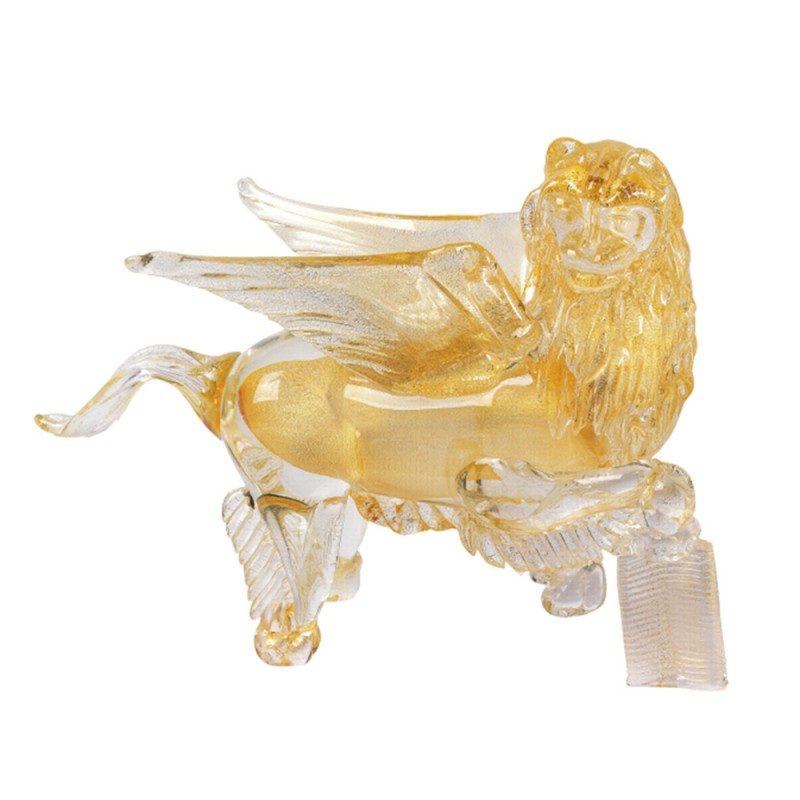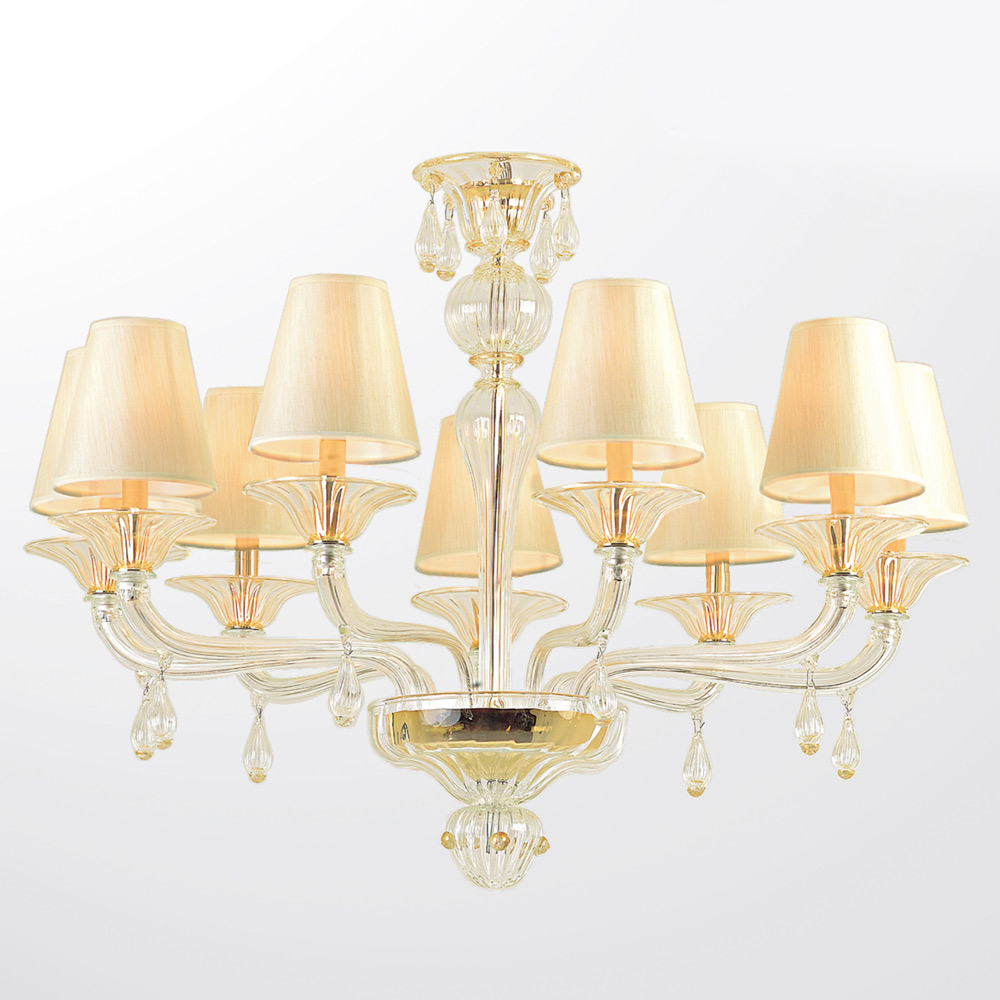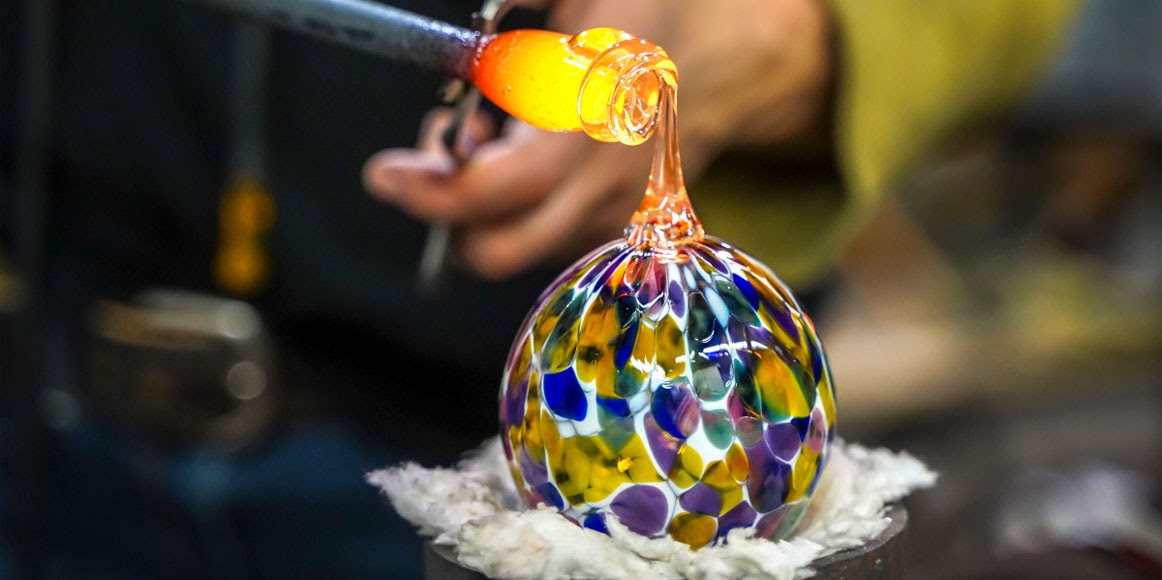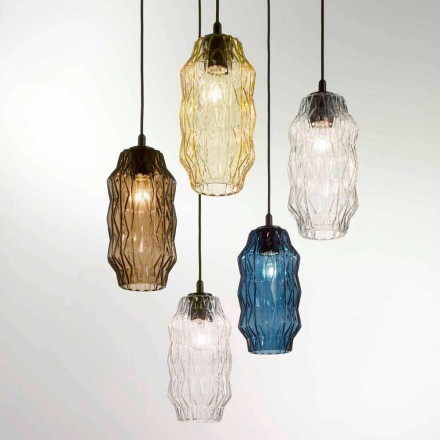 The glass of Venice and Murano is famous all over the world thanks to the high quality craftsmanship, with an ancient and centuries-old tradition. The art of Venetian glass as we know it today develops between 1400 and 1800, with even more ancient roots that refer to the working of glass from the Roman and Byzantine periods.
In Murano, an island a stone's throw from Venice, one of the largest inhabited centers in the lagoon, just look into one of the many workshops of glass masters to take a dip in the past, and thus enter a fascinating atmosphere, typical of the Italian territory; admiring the craftsmanship of the blown glass and the finished products, which can take a few minutes or several hours to create, you come into contact with a world where we are not just talking about work, but about passion and history joined together by the indestructible bond of time.
The glass of Venice and Murano is famous all over the world thanks to the high quality craftsmanship, with an ancient and centuries-old tradition. The art of Venetian glass as we know it today develops between 1400 and 1800, with even more ancient roots that refer to the working of glass from the Roman and Byzantine periods.
In Murano, an island a stone's throw from Venice, one of the largest inhabited centers in the lagoon, just look into one of the many workshops of glass masters to take a dip in the past, and thus enter a fascinating atmosphere, typical of the Italian territory; admiring the craftsmanship of the blown glass and the finished products, which can take a few minutes or several hours to create, you come into contact with a world where we are not just talking about work, but about passion and history joined together by the indestructible bond of time.
History of Venetian glass
The origins of glass art in Venice are lost in the mists of time. Archaeological excavations have brought to light fragments indicating the presence of this activity as early as the seventh century BC, both on the island of Torcello and on the island of Murano. However, it was in the twelfth century that the art of Murano glass appeared as an organized manufacturing activity. At that time the activity was concentrated on the island of Murano, until the Republic decreed the transfer to the island of all the furnaces still functioning in the historic center, for safety reasons linked above all to the risk of fire. It can be assumed that, later on, the techniques were refined in Venice more than elsewhere in Europe thanks to the trade contacts that the Venetians had with the Near East and, above all with the countries of ancient glassmaking tradition such as the Phoenicians, the Syrians and the Egyptians.
The glass processing of Venice
 Venetian glass is sodic, as in the ancient Mediterranean tradition. It means that soda is added to the silica, which is a sand destined to become glass by melting, to allow it to melt at lower temperatures. Potash, an alternative to soda, typical of the Nordic countries, generates a brilliant glass suitable for grinding and engraving (like English lead glass), but not for the complex hot-working, typically Venetian.
The mixing of the raw materials takes place in the evening, at the end of the working hours, and the preparation of the material lasts all night: the stabilizer (such as calcium carbonate), bleaches or dyes are added to the two basic raw materials. possibly the opacifiers. The reverberation oven melts the raw materials at a temperature of about 1,400 ° and the glassmakers find the molten material in the morning, ready for modeling. The glass paste remains malleable up to a temperature of 500 °. The work can then be cold finished by expert grinders who proceed with sanding or other finishing; the figurative engraving is performed in independent workshops, where highly specialized decorators work. If the expected decoration is enamel, the object goes to a specific laboratory where the painting and annealing of the enamel are carried out.
Venetian glass is sodic, as in the ancient Mediterranean tradition. It means that soda is added to the silica, which is a sand destined to become glass by melting, to allow it to melt at lower temperatures. Potash, an alternative to soda, typical of the Nordic countries, generates a brilliant glass suitable for grinding and engraving (like English lead glass), but not for the complex hot-working, typically Venetian.
The mixing of the raw materials takes place in the evening, at the end of the working hours, and the preparation of the material lasts all night: the stabilizer (such as calcium carbonate), bleaches or dyes are added to the two basic raw materials. possibly the opacifiers. The reverberation oven melts the raw materials at a temperature of about 1,400 ° and the glassmakers find the molten material in the morning, ready for modeling. The glass paste remains malleable up to a temperature of 500 °. The work can then be cold finished by expert grinders who proceed with sanding or other finishing; the figurative engraving is performed in independent workshops, where highly specialized decorators work. If the expected decoration is enamel, the object goes to a specific laboratory where the painting and annealing of the enamel are carried out.
The Murano and Venice glass processing techniques
- Enamel decoration: it is an ornamental painting made with a material formed with the same components of the glass wall on which it is applied. Of Islamic and Byzantine descent, the art of enamel developed in Murano in the 13th century.
- Chandeliers: from the Middle Ages to the early eighteenth century the cesendello was the most refined lighting system in homes and churches: it was an elongated container, generally hanging, filled with water and a top layer of oil and equipped with a wick. An important novelty, dating back to the 18th century, is the birth of the lock, the crystal chandelier with candle holders with blown glass elements and decorated with multicolored glass flowers and hanging elements: this chandelier still occupies a prominent place in production today.
- Glass pearls: the simplest are the conterie: rounded or sharp-edged beads, obtained by cutting perforated tubes pulled in the furnace for a length of tens of meters. The dexterity is enhanced in the so-called lampwork: an unperforated glass cane is softened by the heat of the fire that comes out of a torch, then it is wrapped around a metal tube, in order to give the pearl the desired shape and finally decorated with polychrome glass.
- Blown Glass: the invention of blowing dates back to the 1st century BC on the eastern coasts of the Mediterranean, and remains the most important event in the entire history of glass. Especially in Venice, blowing was the preferred technique for high-level glass works. Starting from the Middle Ages, the Murano masters have developed an extraordinary skill in hot modeling, inventing new techniques and coming to propose forms of considerable elegance and great refinement. Among the techniques, the most important is the watermark.
- Murrina: an ancient technique, prior to blowing, it was recovered in the nineteenth century after almost two thousand years of inactivity. It consists in the heat fusion of the kiln of monochrome tesserae or of sections of polychrome glass cane according to a planned design, so as to obtain a very colorful glassy fabric.
- Engraving: it is preferably applied to colorless or slightly colored crystal in two ways: diamond-point graffiti and roller engraving.
- Mirrors: in the past centuries the glass plates produced in Murano by hand (obtained by opening a blown cylinder) were processed in the Venetian workshops of the mirrors. The tradition has been preserved, and expert mirror craftsmen apply the most refined decorative techniques to match the quality of ancient artifacts.
- Sculpture: the technical difficulties related to the modeling of heavy masses of incandescent glass have been faced since the thirties of the last century. Today, the sculptural artistic movement to which some of the most appreciated Murano masters belong occupies a fundamental position in the sphere of Murano production.
- Glassware: since the Middle Ages, the table service has been a typical product of Murano glass factories. Currently the most famous designers collaborate with glass factories for the realization of contemporary models.
- Lampwork: it is performed using a colored glass cane softened with fire by a torch as a semi-finished product. It allows you to make objects in any shape you want.
Click here to discover the Venetian glass chandeliers or sculptures:
 The glass of Venice and Murano is famous all over the world thanks to the high quality craftsmanship, with an ancient and centuries-old tradition. The art of Venetian glass as we know it today develops between 1400 and 1800, with even more ancient roots that refer to the working of glass from the Roman and Byzantine periods.
The glass of Venice and Murano is famous all over the world thanks to the high quality craftsmanship, with an ancient and centuries-old tradition. The art of Venetian glass as we know it today develops between 1400 and 1800, with even more ancient roots that refer to the working of glass from the Roman and Byzantine periods.  Venetian glass is sodic, as in the ancient Mediterranean tradition. It means that soda is added to the silica, which is a sand destined to become glass by melting, to allow it to melt at lower temperatures. Potash, an alternative to soda, typical of the Nordic countries, generates a brilliant glass suitable for grinding and engraving (like English lead glass), but not for the complex hot-working, typically Venetian.
Venetian glass is sodic, as in the ancient Mediterranean tradition. It means that soda is added to the silica, which is a sand destined to become glass by melting, to allow it to melt at lower temperatures. Potash, an alternative to soda, typical of the Nordic countries, generates a brilliant glass suitable for grinding and engraving (like English lead glass), but not for the complex hot-working, typically Venetian.









